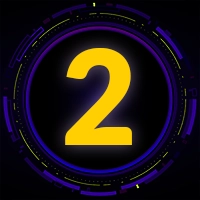
I generally disagree with this practice, and yes, it has value in the right instance.
Stop Sign Safety: Why “Double Stopping” Isn’t the Solution
Stop signs seem simple enough—pull up, make a complete stop, check for oncoming traffic, and proceed when it’s safe. Yet, some driving instructors teach a technique called “double stopping,” which means stopping once at the stop line, then moving up a bit and stopping again to check for traffic visibility.
But here’s the thing: double stopping can be more confusing than helpful.
What is Double Stopping?
Double stopping is essentially stopping twice. After the initial stop at the stop line, you’re expected to roll forward a bit, and then stop again to check for cars coming from both directions. Some instructors emphasize this as an extra safety measure, believing it gives drivers a second opportunity to make sure it’s safe.
Why Double Stopping Can Be Problematic
While double stopping might sound like a thorough approach, it can be more of a hindrance than a help. Here’s why:
- Unnecessary Stopping Confuses Other Drivers
If drivers behind you see that it’s clear, they’ll expect you to move forward after your initial stop. A second stop, especially when it’s unnecessary, can catch them off guard, leading to confusion and potential rear-end collisions. - It’s Not Always Necessary
If you’ve already stopped, checked for traffic, and have a clear view, there’s no need to stop again. Stopping twice is only helpful if your initial view is blocked. In that case, you stop, roll forward slowly to a point where you can see, and make additional stops only if cars are coming. In other words, don’t stop just for the sake of stopping. Stop when it’s actually needed. - Testing Standards
On a driving test, examiners often frown on double stopping when it’s unnecessary. They expect you to know when to stop and when it’s safe to proceed. Pausing for no reason can be seen as a lack of confidence in your decisions, which isn’t what they want to see from a driver.
The Right Way to Approach Stop Signs
- Come to a Full Stop at the Line
Your first priority at a stop sign is to make a full stop at the stop line and take a good look around. Check left, right, and left again for any oncoming cars, bikes, or pedestrians. - Roll Forward Only if Visibility is Limited
If you can’t see clearly from the stop line, roll forward cautiously to a point where your view improves. Check again for traffic, and if it’s clear, go ahead and proceed without stopping a second time. - Be Predictable
One of the biggest keys to safe driving is predictability. When you act in a way that’s consistent and logical, other drivers can anticipate what you’re doing. Stopping unnecessarily breaks that flow and creates confusion.
Bottom Line: Stop When You Need To, Not Just Because
Double stopping is sometimes taught with good intentions, but it’s not always practical or necessary. By focusing on a clear, complete first stop, assessing the situation, and moving forward predictably, you’ll navigate stop signs safely without confusing other drivers—or the examiner on your test.


Comments are closed